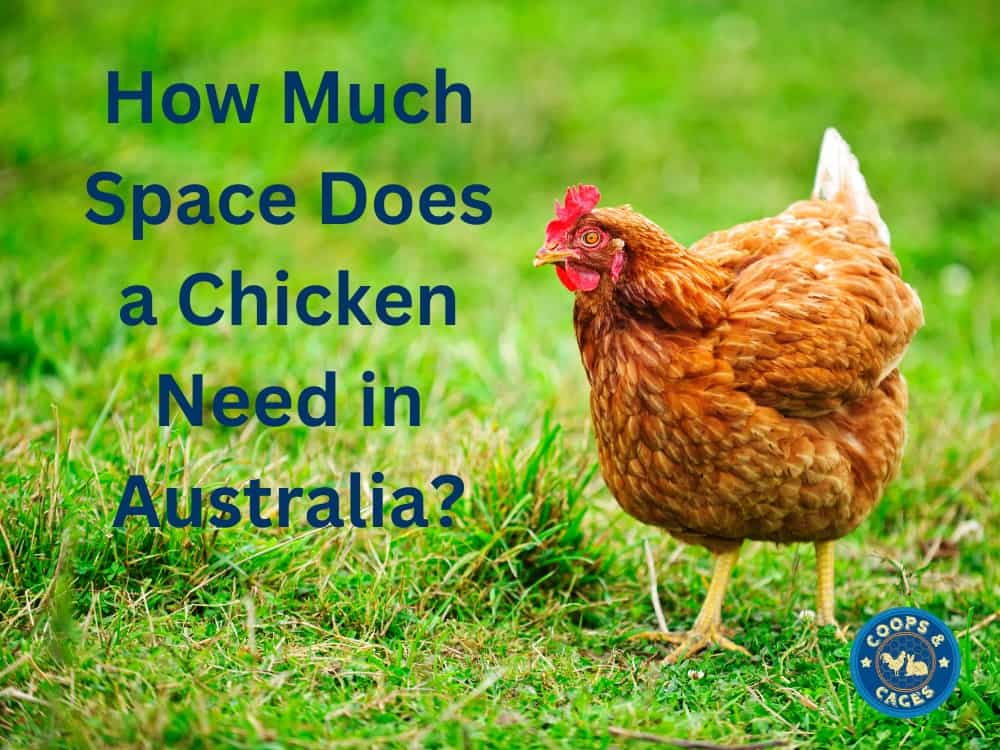Chickens, FAQ's, Interesting
How Much Space Does a Chicken Need in Australia?
Ever pondered the question: “how much space does a chicken need?” We’re about to delve into this poultry predicament together.
We know that a happy backyard chicken needs room to flap its wings and scratch around, right? But how much is enough?
In our journey today, we’ll not only unravel this mystery but also weigh up the pros and cons of free range versus enclosed chickens. It’s more than just square metres; it’s about creating an environment that keeps them clucking happily!
By the end of our adventure, we’ll be able to answer the question “how much space does a chicken need?” and confidently create the perfect home for our feathered friends.
Why Chickens Need Room to Roam
The space your chickens have to roam plays a big role in their health and happiness.
Natural Behaviours
The more room chickens have, the easier they can indulge in natural behaviours. Chooks like to scratch, peck and dust bathe in open spaces.
Dust baths are an essential part of chicken life – it’s how they keep clean. If chickens don’t have enough space to create a small hole or pit for this activity, mites may become a problem which is bad news both for the chooks and their owners.
A good scratch around is also important behaviour – not only does it help find food but helps strengthen legs too. When given ample roaming area outside of their coops, chickens can engage more frequently in these beneficial activities.
Egg Production
If you’re keeping hens for eggs, make sure they have plenty of space. Hens that are cramped often lay fewer eggs because stress can disrupt the laying cycle.
If you were to keep your flock is extremely small spaces, you may find a lot of broken eggs about. This is because chickens start eating eggs when they are in overcrowded situations, brought on by stress.
So if you want fresh eggs every morning for brekkie, give your girls some room.
Social Dynamics
You’ve heard about “pecking order“, right? It’s real amongst backyard flocks. Chickens establish social hierarchies where each bird knows its place on the ladder—usually determined by age or size—and peace reigns as long as everyone remembers their rank.
Crowded conditions can cause friction within this system leading to squabbles over resources such as feeders and high perches.
Giving your chickens plenty of room to roam helps keep the peace by reducing competition for resources.
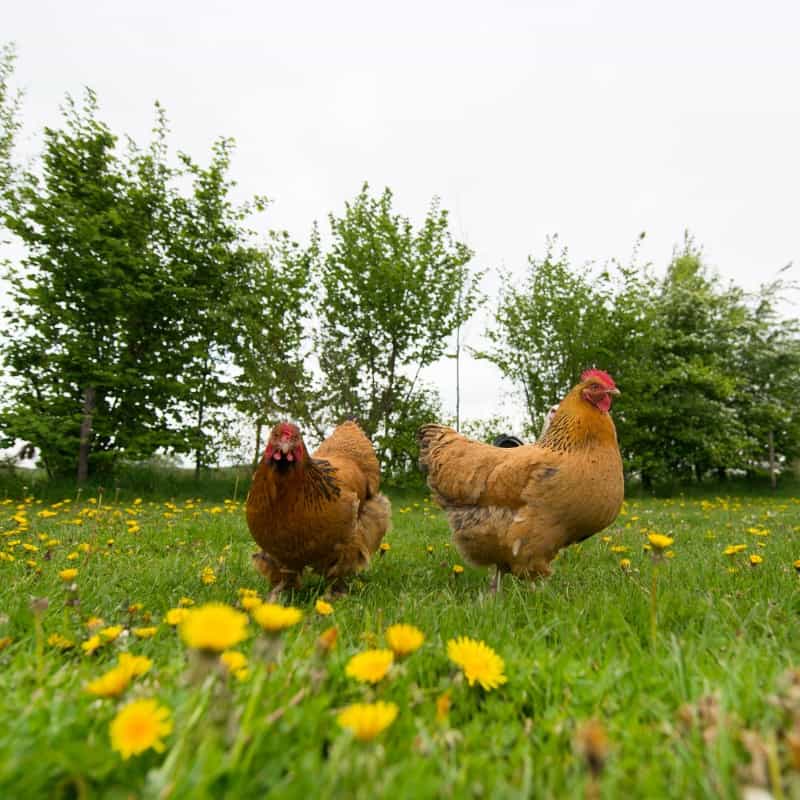
Health Concerns
The health benefits of more space aren’t just mental; they’re physical too. Mature chickens that are confined can become overweight, which puts them at risk for a variety of diseases like heart disease and arthritis.
Jordan’s Tip:
Your chooks need plenty of space to strut their stuff. Putting larger breeds in a small coop can lead to health issues, reduced egg laying, and a break down of social hierarchies.
How Much Space Does a Chicken Need?
Chickens, just like us humans, enjoy having their own personal space. It’s essential for their health and happiness. But how much room exactly do these feathered friends need?
Space Requirements
The general rule is that each chicken needs a minimum of 1 square metre of space (10 square feet).
However, more room is always better to prevent pecking disputes and ensure overall wellbeing.
When calculating chicken coop size, consider if your chickens will be let out to roam freely in your yard during the day or whether they will be enclosed inside their coop full time.
If your flock will free range during the day, their coop will just be for sleeping and can be smaller.
However, if the coop will be their full time home then it will need to include a large outdoor area for daytime activities.
Here at Coops and Cages, we specialise in safe coops that offer ample room for our feathery pals.
Breeds
When calculating coop sizes, consider what breeds you will keep. When websites recommend a hen house fits a certain number of chickens, they are talking about standard sized hens (such as Isa Browns or Australorps).
Large chicken breeds, such as Jersey Giants and Rhode Island Reds, will need extra room to move and a wider nesting box.
Bantam breeds are able to be housed in a smaller coop and won’t need as much yard space per hen.
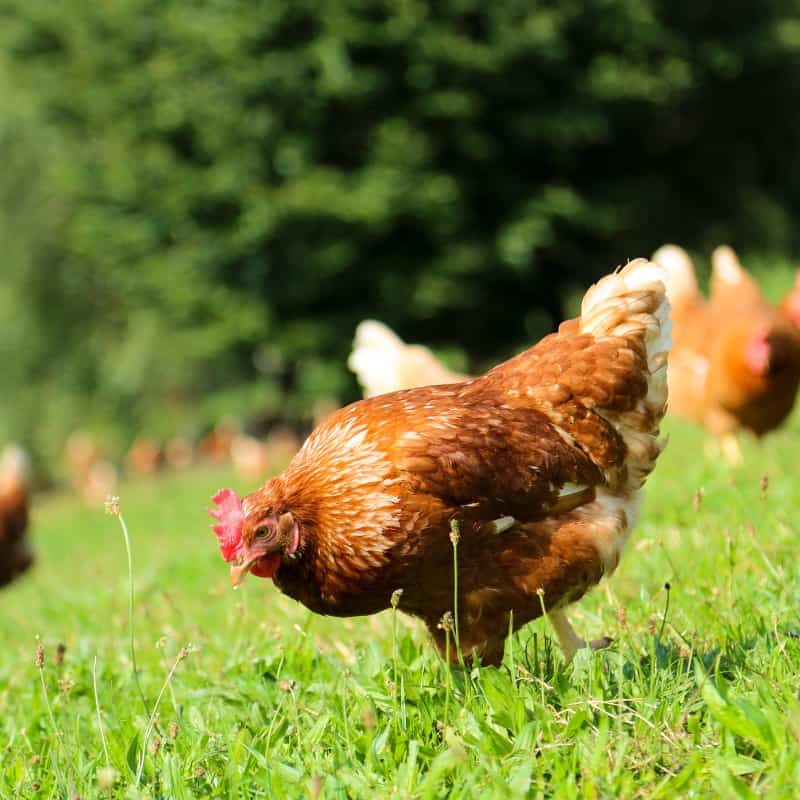
Free Range vs. Enclosed Chickens
A key point of contention among chicken keepers is the decision to allow their birds to free range or to confine them. Both approaches possess pros and cons.
Free-Range Chickens
Raising chickens in a free-range environment lets them engage in natural behaviours like scratching, pecking, and dust bathing. It’s often believed that this freedom contributes to happier hens who lay better-tasting eggs.
Eating bugs and grasses also helps to supplement their nutritional needs. However, predators can pose a real risk to free-ranging birds, including foxes, feral cats and snakes.
Enclosed Chicken Keeping
Housing your chickens in an enclosed area keeps them safe from predators and weather, and allows you to monitor their food intake. It also stops them getting into your garden or wandering into your neighbour’s yard.
However, you need to make sure your flock have ample room within their enclosure to move around and be happy. Provide them with a large chicken coop and run, with a bare minimum of 1 square metre per chicken.
Jordan’s Tip:
Your chooks need plenty of space to strut their stuff. Putting larger breeds in a small coop can lead to health issues, reduced egg laying, and a break down of social hierarchies.
Creating a Suitable Environment for Your Chickens
Chickens, just like any other pet, need a space that’s secure and cosy. Here at Coops and Cages, we believe in giving your chickens the best home they could ask for. Other than size, your chicken coop needs to have these features:
Safety From Predators
A predator-proof chicken coop should have sturdy wire mesh on the sides, to keep out foxes. Ensure mesh has holes 11×11 mm or smaller. This will keep out snakes and mice.
Some models, such as the Deluxe Mansion Chicken Coop, also have wire mesh on the floor to prevent foxes and rats from digging their way in underneath.
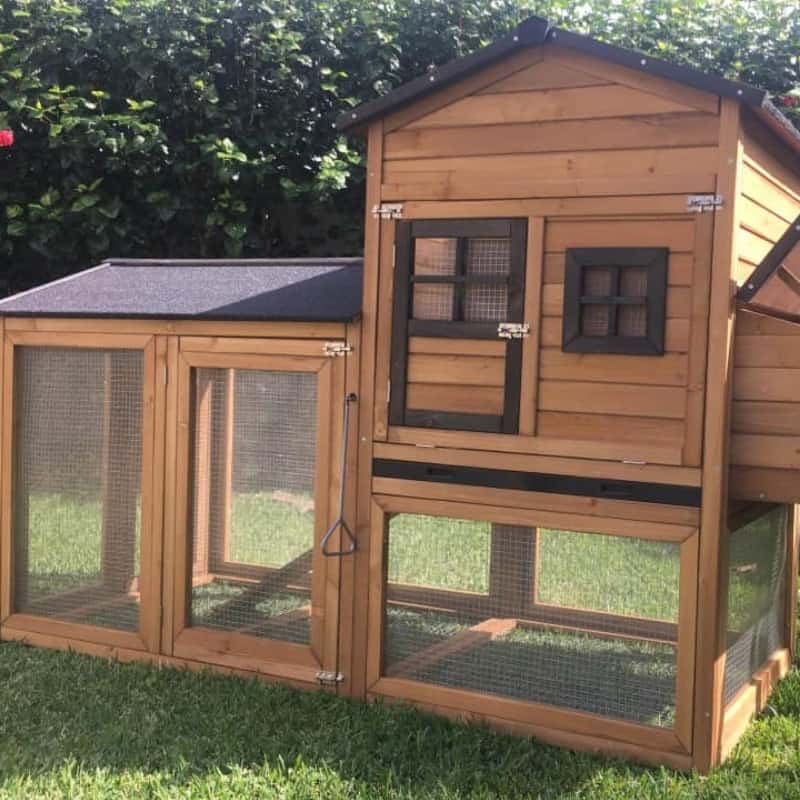
Long Lasting
You want your chicken coop to last the lifetime of your chickens. The Castle Chicken Coop has long-lasting black coated wire mesh and a rust-resistant stainless steel tray, ensuring you won’t need to replace your coop anytime soon!
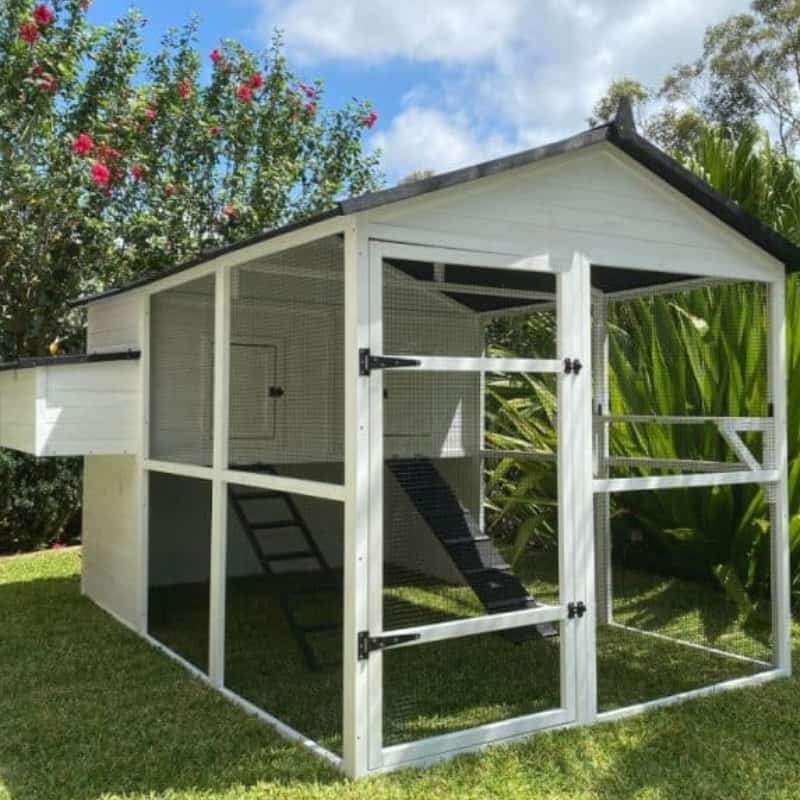
Protection from Weather
Your chicken coop should provide a covered area where your flock can seek protection from harsh sun or heavy rain. The Connie Chicken Coop has a fully-covered roof so your chickens have plenty of protected area to roam at anytime of year.
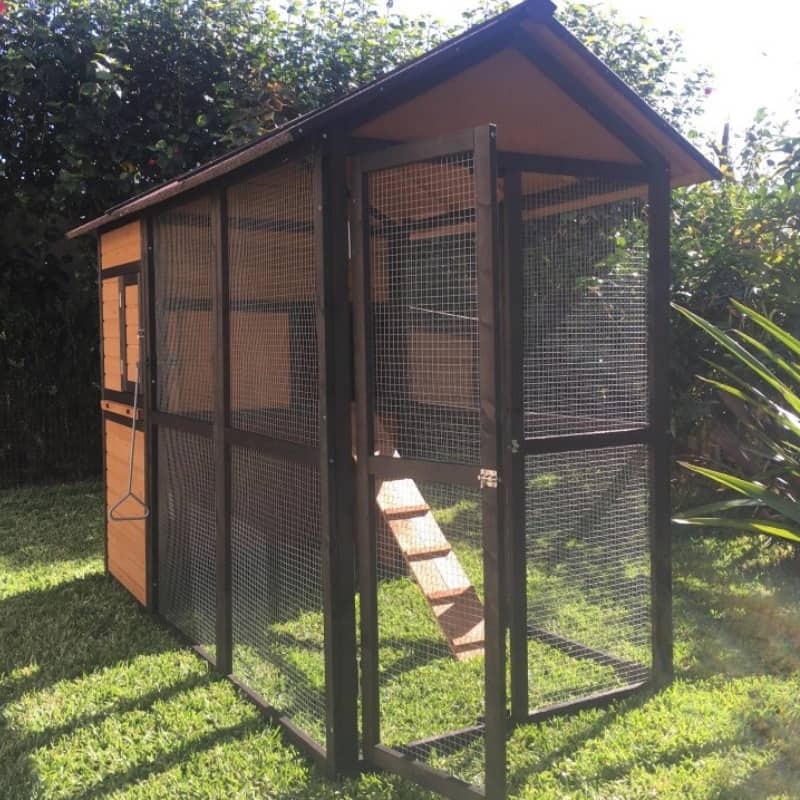
Easy to Clean
To save yourself a lot of hassle, choose a chicken coop that is easy to access. A coop with wide opening doors and a slide out metal tray, such as the Resort Chicken Coop, makes cleaning a breeze.
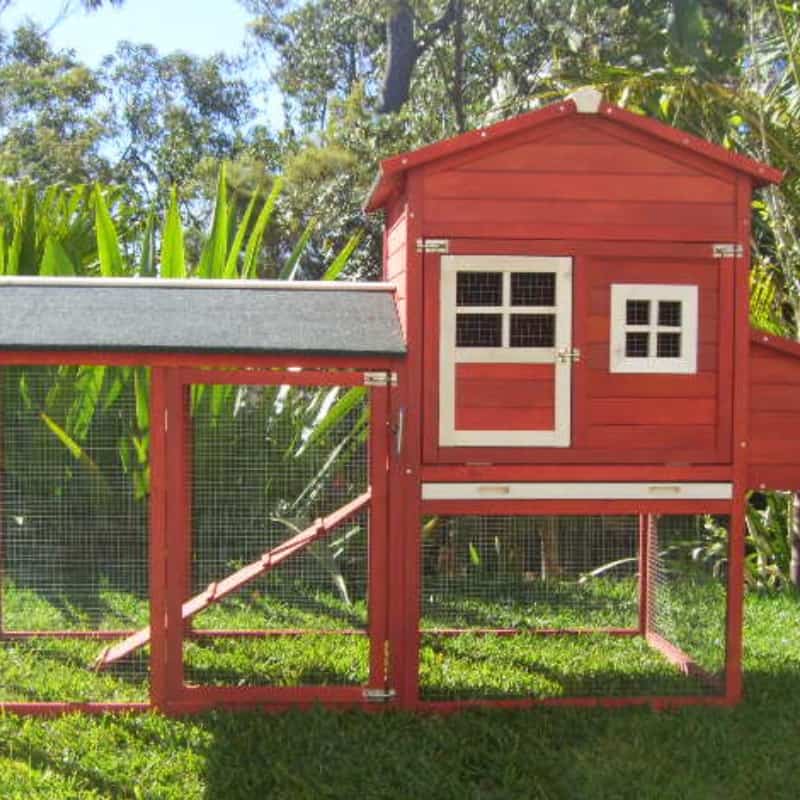
FAQs in Relation to How Much Space Does a Chicken Need
How Much Space Should 2 Chickens Have?
If you’ve got two standard sized chooks, plan for at least 2 square metres of outdoor run area.
Can Chickens Be Left Alone For A Week?
Mature chickens can be left alone for 2 or 3 days, as long as they have ample food, water and space to move comfortably.
How Many Chickens Per m2 Free Range?
It is recommended you have one chicken per square metre to ensure they have enough room to roam and forage comfortably.
Jordan’s Wrap
There you have it! We’ve untangled the riddle of how much space does a chicken need.
Remember, if your chooks are free ranging during the day, they can get by with less coop room. But for full-time coop dwellers? They’ll need more legroom to stretch and strut about.
Maintaining happy hens means creating an environment where they can thrive. So whether it’s roaming in open spaces or clucking away inside spacious coops…it all starts with understanding their needs. Give them enough room to flap those wings freely!
For quality chicken coops that provide plenty of room and comfort for your feathered friends, be sure to visit the Coops and Cages website.



